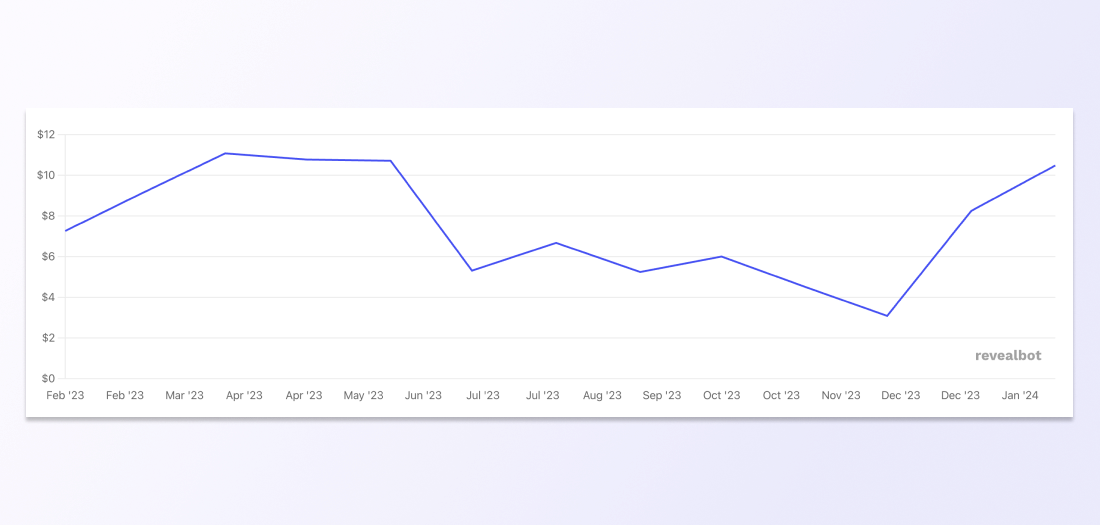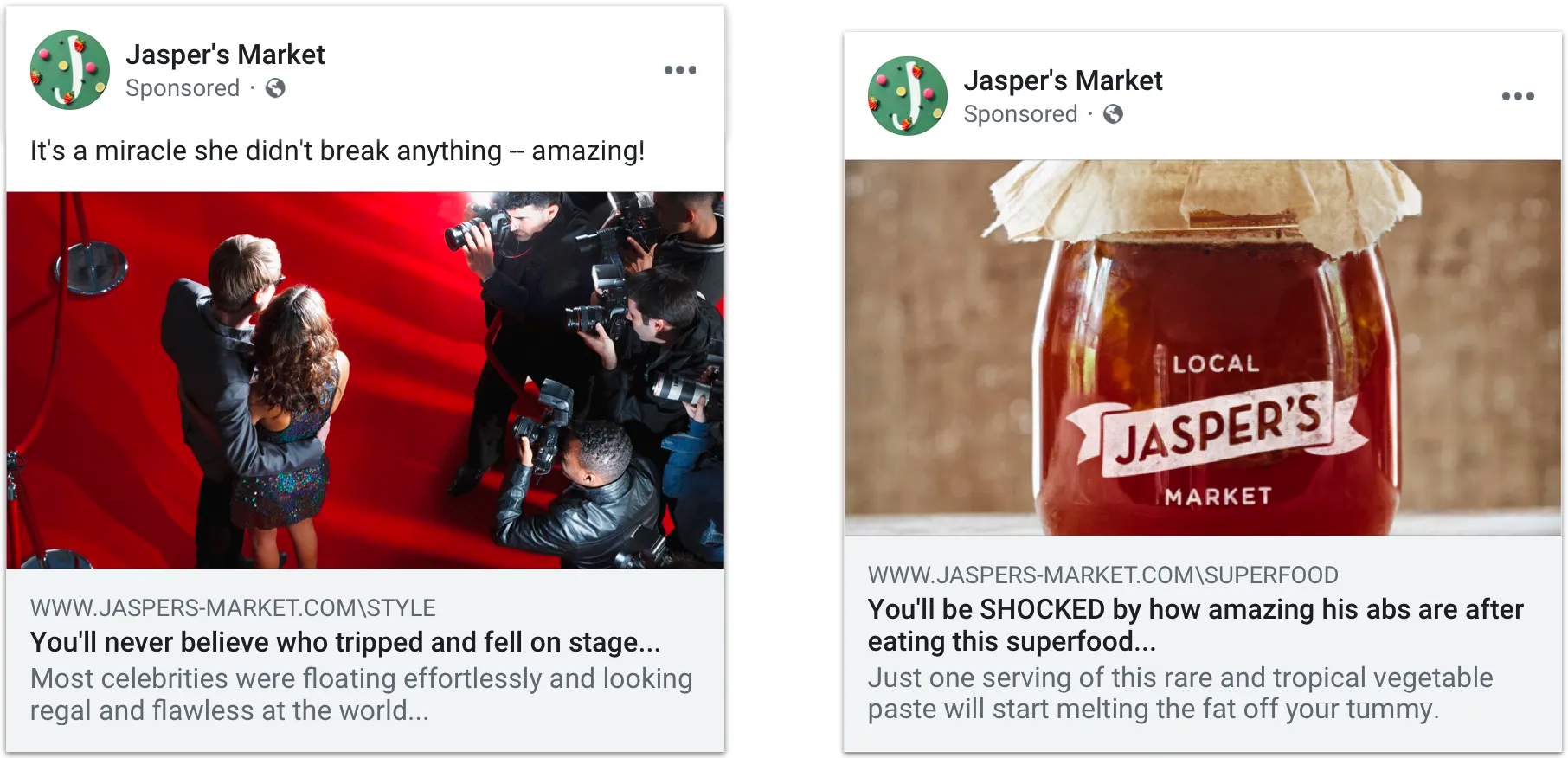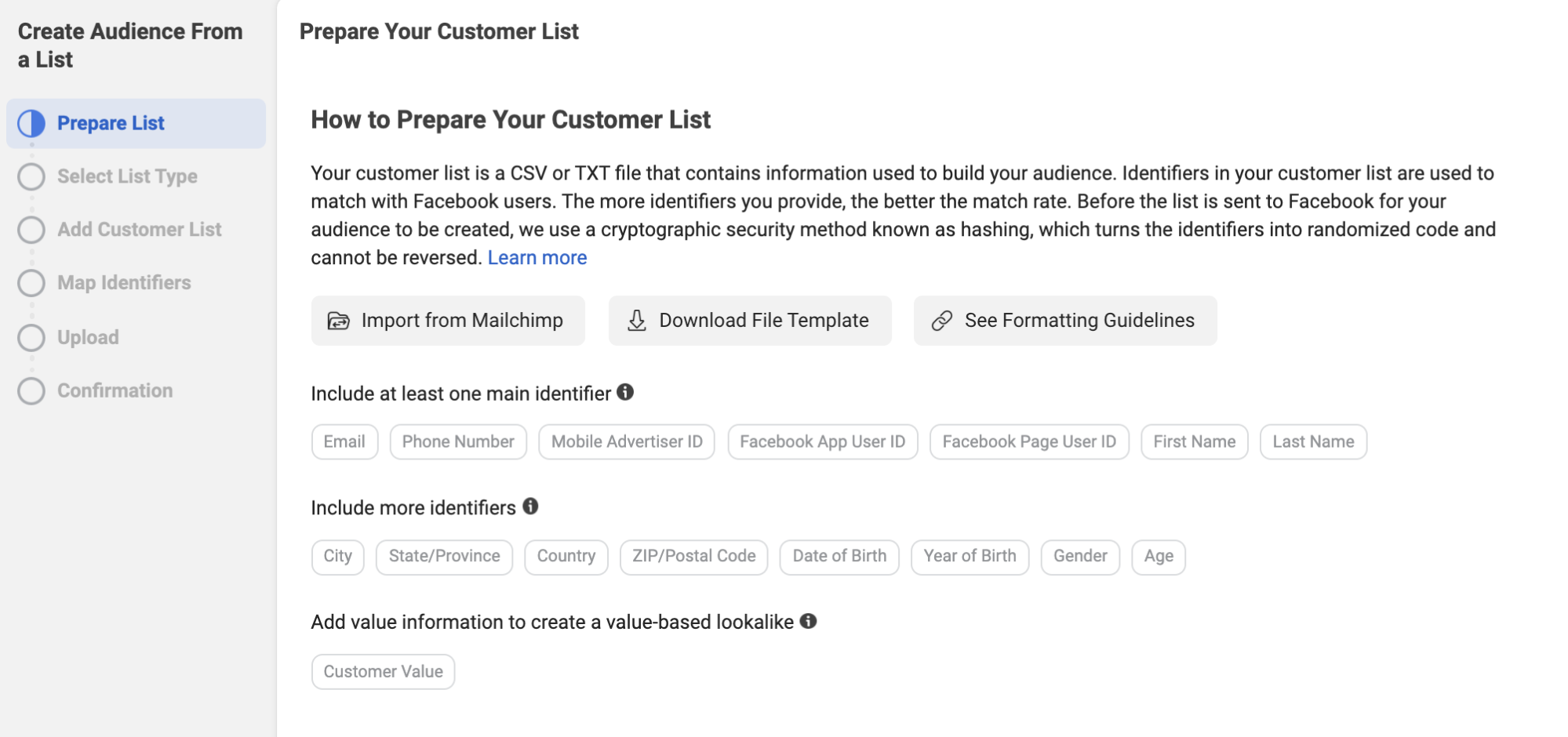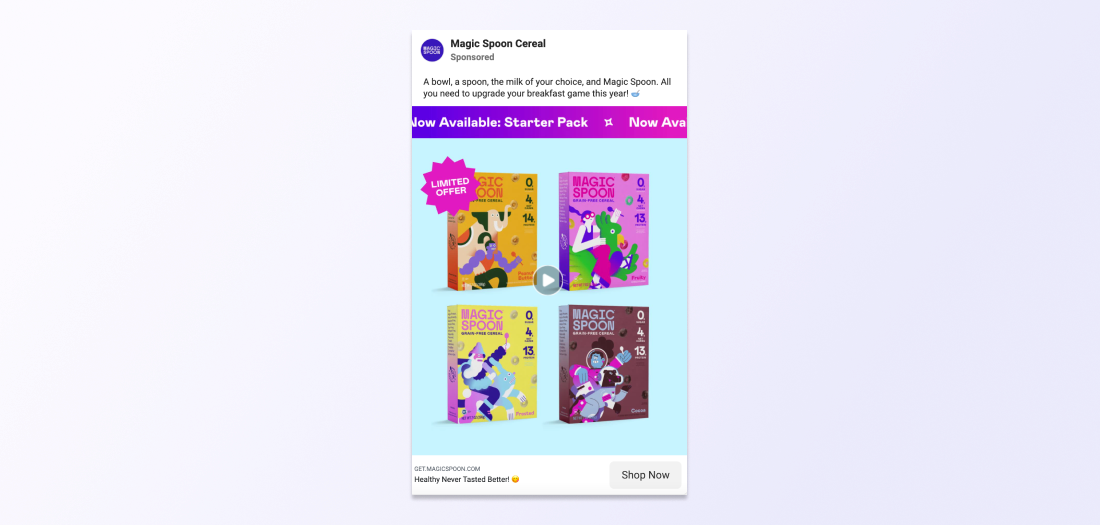Facebook advertising is part of the marketing plan of many small businesses. As the world’s largest social media platform, the site provides unparalleled access to new prospects but attracts competition as similar businesses target the same users.
The more demand for a Facebook audience, the more ad costs increase. So, how much should you spend to beat the competition and reach your target customers?
Below, find figures on how much the average business budgets for Facebook ads, plus tips to reduce the cost of ad campaigns—without sacrificing results.
How much do Facebook ads cost?
Facebook bills advertisers based on two metrics: cost per click (CPC) and cost per mile (CPM), otherwise known as cost per 1,000 impressions.
- Facebook ads cost approximately 69¢ per click.
- Facebook ads cost approximately $9.88 per 1,000 impressions.
Average Facebook ad cost: CPC
The average CPC for Facebook ads in February 2024 was 69¢. That makes it cheaper, on average, to run an ad on Facebook than on Pinterest or Instagram.
Seasonality and competition play major roles in the cost of winning a Facebook ad auction. While the site’s average CPC is a helpful guide, consider factors such as your campaign’s timing, type, and objectives for a more accurate estimate.
Average Facebook ad cost: CPM
Many online stores use Facebook to build brand awareness amongst its three billion monthly active users. If reach and awareness are your goals, focus on the cost of impressions, known as cost per mile, or the cost of being seen by 1,000 Facebook users.
The average CPM for Facebook ads in February 2024 was $9.88.

Average Facebook ad cost: CPL
While advertisers pay for ads based on CPC and CPM, other metrics such as cost per lead (CPL) can help you understand the wider value of Facebook ad campaigns.
Many brands use Facebook to generate email leads—potential customers who agree to receive newsletters, promotions, and other communications via email.
Unlike fleeting ad impressions, email subscribers are a more stable and potentially profitable audience. Building an email list through Facebook ads offers the benefit of ongoing contact with your audience, without needing to pay ad costs.
The average CPL for Facebook ads in February 2024 was $8.87.

By refining your audience targeting, you may be able to decrease your CPL and therefore your overall ad spend.
Meta has a variety of tools to help you refine your Facebook audience targeting. You can use demographic data to narrow down your audience, or expand to lookalike audiences based on your existing customers.
By focusing on the people most likely to subscribe, you might increase your ads’ conversion rate and lower your CPL. Scroll down for more detailed information on how to reduce your Facebook ad costs
With a lower cost per lead, you can build an ongoing relationship with your customer base for less.
Concerned about overspending on Facebook ads? Set a bid cap for your campaigns. If you can calculate a customer’s value, a bid cap stops you from spending more than your customers are worth.
6 factors affecting Facebook ad costs
The price of a Facebook ad isn’t random. A combination of factors affects the ultimate cost per click or impression of every ad you run.
1. Bidding strategy
Your chosen bidding strategy influences your ad costs. You can opt to pay based on an ad’s budget or goal:
- Spend-based bidding tells Facebook to maximize results within a set budget, either by finding the lowest average cost per conversion or by targeting a smaller number of high-value conversions.
- Goal-based bidding tells Facebook to pursue a target conversion rate and allocate spending accordingly. Overall spending can still be capped or set within a predefined range.
You can also forgo Facebook’s dynamic ad bidding algorithms and make specific manual ad bids.
2. Ad quality and relevance
The relevance of your ads to your audience will impact how much you pay. Meta prioritizes ads that are relevant to its users, leading to a better browsing experience. Relevant ads tend to perform better, making them more cost-effective.
Meta’s ad relevance diagnostics tool can show you whether your ads are relevant to the audience you’re trying to reach. The tool assesses your ad’s historic ranking in ad auctions over three categories:
- Quality. Meta judges ad quality through a combination of user behavior data (whether they choose to hide the ad, for example) and elements of the ad’s content (such as sensationalist language or clickbait).
- Engagement. This refers to how often your ad is clicked, commented on, shared, or expanded compared to competing ads.
- Conversion. The likelihood that a user who viewed your ad will complete your goal.
Use diagnostics to understand more about your underperforming ads. Is it your creative assets, the post-click experience, or audience targeting that needs work?

3. Audience
The audience you target can significantly influence your ad costs. Factors like age, location, and interests can drive costs up or down. For instance, targeting a densely populated city or a highly sought-after demographic might cost more.
There are two general approaches to creating audiences:
- Specific or custom audiences use inputted data to target people who already know about your business, or who are likely to be interested.
- Broad audiences refer to users identified by Facebook and may include a wider variety of prospects.
Remember, targeting a narrower audience might cost more per click, but if it leads to a higher conversion rate, it could offer better value. Whoever your initial audience is, Meta will learn who is engaging most with your ad over time and refine your audience to reach more of the right people.
4. Ad format and placement
Ad placement refers to where your ads are displayed on Facebook and within Meta’s ecosystem—including ads on Instagram, Messenger, and Audience Network. You’ll pay different amounts depending on whether your ad appears in the news feed or the right column.
Available placements depend on campaign objectives. For instance, awareness or website traffic campaigns can be formatted in various sizes, such as a single image or video, a carousel, or collection ads on Facebook, Marketplace, and Instagram.
Facebook recommends running ads on Instagram and Facebook to reduce the average cost per result of your ad. You can let Facebook optimize your ad placements or manually choose where you want your ads to run.
5. Time of year
Advertising costs can increase during popular advertising times. The price of a Facebook ad historically skyrockets in the latter months of the year. Black Friday and holiday shoppers draw more advertisers to the platform, increasing the number of competitors in ad auctions.
6. Performance goal
Your ad costs will vary based on your chosen performance goal, which is the desired outcome that Facebook will bid on for you in the ad auction. Whether you aim to increase brand awareness, get app installs, or drive website traffic, each goal comes with its own cost.
You can select from a long list of performance goals, including maximizing:
- Ad reach
- Impressions
- Landing page views
- Link clicks
- 2-second continuous video views
- Leads
The available performance goals depend on your wider campaign objective.
Remember, some optimization events cost more than others. For instance, a conversion may cost more than a landing page view. Therefore, when setting your budget and bid strategy, consider the cost of your chosen optimization event and make sure your budget can accommodate.
How to reduce Facebook ad costs
Once Facebook ads generate revenue, it’s natural to be cautious about changing your marketing budget. You don’t want to lose your ad spots to competitors.
Thankfully, Meta provides tools and data to optimize your ad spend.
- Pick the right campaign objectives and goals
- Use narrow audience targeting
- Run retargeting campaigns
- Make your campaigns relevant
- Monitor ad frequency
- A/B test ad creatives and placements
- Focus on post-click experiences
1. Pick the right campaign objectives and goals
One of the first things Facebook asks you to do when creating an ad is to pick a campaign objective. There are six objectives to choose from:
- Awareness
- Traffic
- Engagement
- Leads
- App promotion
- Sales
The objective you choose should describe the result you want to achieve from buying ads on the platform. Experimenting with these objectives, and the related performance goals mentioned above, impacts the cost of advertising on Facebook.
The algorithm pairs your objective with users who fit its criteria. If you’re bidding for sales, for example, your ad is more likely to be shown to Facebook users who’ve made purchases through the platform before.
Selecting the wrong campaign objective can lead to higher costs. If you pick lead generation when your real goal is brand awareness, for example, your campaign may become less efficient. To avoid unnecessary costs, make sure you develop a clear marketing goal for your ad campaign.
2. Use narrow audience targeting
Facebook’s algorithm considers ad relevance when calculating bids. The smaller and more relevant your audience, the more chance you have of winning the ad auction.
That makes it more cost-effective to use narrow audience targeting. But to find the right audience, it helps to begin with an established wider pool, so you can discover which audience types are most responsive to your content.
“Start your targeting a bit broader than you would initially think,” says Josh Jurrens of Caliper Marketing. “This gives Facebook a bit more room to find users most likely to take your intended action before narrowing your targeting. Starting too narrow will result in high costs and fewer conversions.”
For example, let’s say you’re an online business that sells home coffee machines. You’re experiencing high Facebook ad costs with this custom audience:
- Female
- Based in the US
- Aged 18+
Your sales data reveals that most of your customers are based in Los Angeles, and customer surveys indicate they buy from you because they don’t have time to pick up a Starbucks coffee during their morning commute.
With this information in mind, you refine your target audience to people who:
- Live within 10 miles of Los Angeles
- Show interest in “Starbucks”
- Have an annual income of more than $75,000
By starting with an established audience and then using data to reduce its size, you’ve increased ad relevance and likely reduced your spend.
Brooks Manley, marketer at Brew Interactive, recommends doubling down on the audience types you exclude.
“Some brands worry they might be excluding potential customers, but if there are certain demographics or interests that might indicate a poor fit for your product, exclude them,” says Brooks.

3. Run retargeting campaigns
The Meta pixel collects data about your website visitors and pairs it to a Facebook profile—including the pages they visited, which items they added to their cart, and their visit duration. All of that data can be fed back into your campaign to run personalized retargeting ads.
“In my experience, I have found that remarketing ads were the cheapest to run,” says Usama Ejaz, co-founder of social media management tool SocialBu.
“Let’s say you want to run a campaign for sign-ups to your website blog. Combine that with a remarketing ad that targets the visitors to your blog post from the first ad and you will save a lot of money.”
Potential Facebook retargeting ads could include:
- Abandoned cart ads. Show shoppers products they added to their shopping cart but didn’t purchase.
- Landing page ads. Serve ads according to the area of your website a person visited.
- Recent visitor ads. Show ads to recent visitors to your site to keep your brand top of mind.
4. Make your campaigns relevant
Once you’re serving ads to a specific audience, it becomes easier to make your ad creatives relevant to potential customers.
Retargeting campaigns can be based on a previous experience that a person had with your brand, such as browsing a product page. Ads for custom audiences can leverage data used to define the audience—things like their interests and location.
Other data sources you can apply include post-purchase surveys and historical ad performance data. Do your customers prefer video ads or image carousels?
Use these insights to craft copy that aligns with your audience’s tone of voice, vocabulary, and needs.
Serving familiar content can effectively build trust. Cereal company Magic Spoon, for example, promises customers that they can “up their breakfast game” by purchasing its cereal.

5. Monitor ad frequency
A potential drawback of niching down your Facebook advertising audience is that campaigns can become repetitive. Once a user sees your ad several times in their news feed, it is likely to lose conversion power, no matter how relevant and well-targeted.
Facebook keeps track of ad frequency with a simple calculation: impressions divided by reach. As your frequency score creeps beyond two or three, consider refreshing the campaign with new ad copy, images, or videos—you may not need to overhaul your creative entirely to keep the content interesting.
“When your ad has been running for some time, it will be seen by the same people repeatedly,” says Tim Clarke, Director of marketing agency Thrive, explains. “Therefore, you will notice that your advertising costs will be lowered if your frequency is as close to one as possible.”
6. A/B test ad creatives and placements
Facebook advertising is a mixture of science and art. Many variables affect an ad’s performance (including seasonal factors beyond your control) so it can be hard to land on the perfect creative or audience selection.
But you can improve your results and cost-efficiency through A/B testing.
Facebook’s A/B testing feature helps advertisers find winning combinations. So, for each campaign, experiment with the following elements and monitor the impact on your ad costs:
- Ad creatives. Do images, videos, or carousels do a better job of engaging your audience? How about long-form versus short-form content? Influencer content or user-generated visuals?
- Placements. The news feed may be the first port of call for advertisers, but test whether your ads get more attention elsewhere—like the Audience Network. Instagram Stories are also worth exploring if your priority is clicks at the lowest cost.
7. Focus on post-click experiences
A successful Facebook ad is a valuable asset for any business, but your post-click experience will have the final say on whether an ad click turns into a conversion.
Present potential customers with a slow-loading website or a confusing user experience and an eye-catching campaign won’t help you.
Here are some simple ways to improve the post-click experience of people visiting your website through a Facebook ad:
- Direct shoppers to personalized landing pages. Make product discovery easily accessible by pointing your ad to a relevant page (not your homepage).
- Have fast loading times. A one-second improvement in site speed can increase conversions by 27%. Compress images, remove unneeded Javascript, and minimize third-party apps to speed things up.
- Make it mobile-friendly. The vast majority of Facebook users access the platform via mobile devices. Make sure your online store is responsive and adjusts to a smaller screen size.
- Offer one-click checkout. Less friction at the checkout means less chance of customers leaving. Use Shop Pay to increase conversions by 10% versus other accelerated checkouts.
The cost of Facebook ads is always changing
Facebook is a valuable marketing tool for businesses of all sizes. You’ll find customers of various interests, income levels, and locations using the platform—many of whom discover new products through ads in their news feeds.
Master Facebook advertising is all about trial and error. Test different campaigns and creatives, comparing them to past performance. Soon, you’ll start to see winning, cost-effective advertising strategies that resonate with your audience.
Facebook ad costs FAQ
Why are Facebook ads so expensive?
Facebook ads that target popular or valuable audiences can be expensive because many businesses are bidding for the same ad space. The more competitive the ad auction, the higher the cost of the winning bid.
What is a good cost per click?
The cost per click of Facebook ads continually changes based on factors such as the ad’s objective and the desirability of the target audience. A good cost per click allows a marketer to win the Facebook ad auction and serve the ad to Facebook users, while remaining less than the expected value of the click.
How much should you spend per day on Facebook ads?
The minimum budget for a Facebook ad is $1 per day for campaigns billed by impressions. For more aggressive campaigns, such as those designed to drive traffic or sales, a minimum budget of $5 per day is recommended.
How does Facebook’s ad auction system work?
Facebook’s ad auction system is a bidding war where businesses compete for ad space. But it’s not just about who bids the highest. Facebook also considers the relevance and quality of the ad. The system aims to show ads that are most valuable to users, balancing both the advertiser’s bid and the ad’s quality.
How can you improve the performance of your Facebook ads?
Improving ad performance often comes down to refining your targeting, enhancing your ad creative, and optimizing your bidding strategy. Use Facebook’s audience insights to understand your audience better and tailor your ads to their interests and behaviors.
Are paid Facebook ads worth it?
Facebook ads remain a good investment for online brands thanks to the social media platform’s unparalleled reach. However, a diversified marketing campaign that makes use of multiple channels, including other social media platforms, will likely yield the most worthwhile results.



